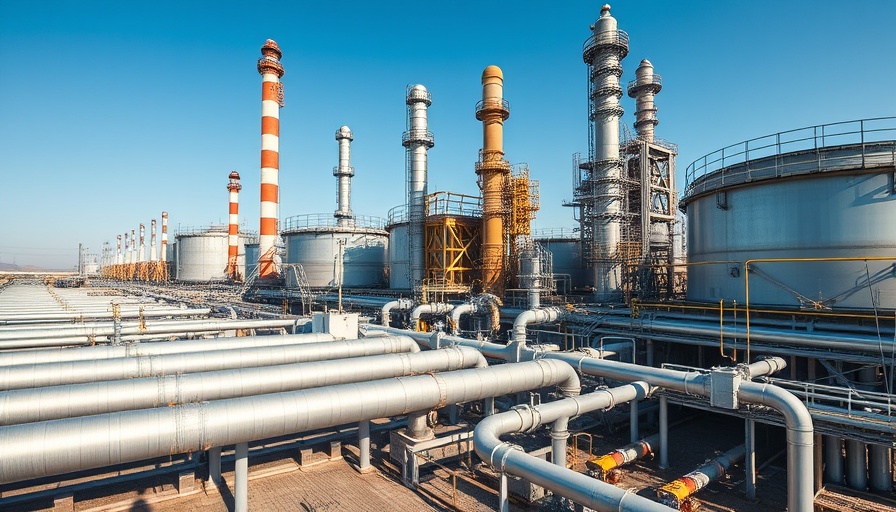
Understanding the Future of U.S. Natural Gas Prices
As we look at the recent trends in U.S. natural gas prices, it's evident that while they are currently experiencing a downturn, analysts at Morgan Stanley predict an upside in 2026. The price of natural gas, as of late July, saw a rise of 2.4%, reaching $3.138 per million British thermal units (MMBtu). However, despite this surge, prices are still down approximately 9% over the month and around 13% year-to-date.
Analyzing Recent Factors Influencing Prices
The decline in natural gas prices can be attributed to several factors, including a significant storage surplus and the impact of milder summer weather. Throughout April to June, natural gas inventories built at an above-normal rate. Reports indicate mild spring temperatures, robust supply levels, and extensive maintenance at liquefied natural gas (LNG) facilities have all contributed to this situation. Furthermore, power burn rates have weakened compared to the previous year, further exacerbating the inventory build-up.
The Role of Weather Patterns and Future Predictions
While July's storage changes have aligned more closely with seasonal norms, they have not sufficiently reduced the surplus generated in earlier months. As we move into August and the forecast leans towards milder conditions, analysts are expressing concerns about entering the winter of 2025-26 with above-average inventories. This scenario raises questions about the sustainability and liquidity of natural gas prices moving forward.
Market Dynamics and Investment Implications
Even with the current challenges, Morgan Stanley emphasizes that there remains a potential for increased prices in the future. The ongoing investment in drilling activity can bolster demand as the country gears up for winter. Investors should be alert to market dynamics, particularly regarding storage levels and consumption patterns as they adapt to changing weather conditions. This is crucial as strategic investment decisions can influence yield and returns.
Implications for Investors in Natural Gas and Beyond
For those considering investments in commodities, natural gas presents an interesting case. Navigating the complexities of investment can significantly impact portfolios, especially with potential shifts in the commodity’s market trajectory. Key strategies include portfolio diversification with natural gas ETFs or mutual funds that focus on commodities, as well as bonds that may serve as hedges against inflation associated with commodities. Moreover, investors should consider utilizing asset allocation strategies that balance risk while capitalizing on predicted upside potentials in commodities like natural gas. This includes adjusting investments in stocks with strong growth potential in the energy sector or exploring opportunities within real estate investing, where gas prices can influence heating costs and property values.
Conclusion: Strategic Takeaways for Investors
As we reflect on the insights from Morgan Stanley and current market trends, investors are encouraged to remain proactive and adaptable to shifts in natural gas prices. Understanding the multifaceted impacts on the broader stock market will be key in devising effective investment strategies. Additionally, being informed through resources such as investment research tools and market analysis is pivotal for optimizing decisions in portfolios.
Whether you are investing for retirement, interested in ethical wealth building, or considering venture capital opportunities, being educated about asset allocation, risk management, and market trends will ultimately lead to more informed and beneficial investment choices.
 Add Row
Add Row  Add
Add 



Write A Comment